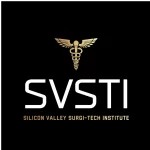
Hospitals, dentist’s offices, surgery centers, or other medical facilities can only safely operate with the effective sterilization of supplies and equipment.
To maintain all safety standards, these facilities utilize sterile processing technicians who specialize in following specific procedures that stop the spread of equipment-related bacteria and infections.
If you’re interested in helping the medical community, a career as a sterile processing technician can be a lucrative and rewarding career.
Keep reading to learn more about how to become a sterile processing technician in California!
Page Navigation
Steps to Become a Sterile Processing Technician in California
To become a sterile processing technician in California, these are the most common steps:
One: Enroll in a Diploma Program
Although some employers require a degree, many in this field start with a sterile processing diploma, which can be earned in as fast as 42 weeks.
In addition, the requirements to enter most programs include proof of a high school degree and passing the Scholastic Level Exam.
Two: Acquire Certification
Holding licensure or certification is optional by the State of California.
However, it makes graduates considerably more marketable to potential employers than those without certification.
Three certifications exist:
- CBET – Certified Biomedical Equipment Technician
- CLES – Certified Laboratory Equipment Specialist
- CRES – Certified Radiology Equipment Specialist
Three: Seek Employment
Once you have earned a diploma and certification, the final step is to seek employment.
The better diploma programs also have a career services team, which can assist graduates with job placement.
In addition to utilizing the school’s services, pushing your resume onto as many job posting websites, like LinkedIn or Indeed, is essential.
Also, since most programs require hands-on training, contact hiring managers from your training to determine if any positions are open.
Sterile Processing Technician Schools in California
There are a few schools where interested candidates can earn sterile processing technician training, including:
Central Sterilization School
Located in Southern California, this institute specializes in all forms of sterilization training, including for the medical industry.
The primary focus of the Central Sterilization School is utilizing independent learning and virtual classes.
The curriculum is prepared by management personnel and seasoned technicians who have been in the industry for years.
In addition to the lecture, students must complete 400 hours of hands-on training at local medical facilities.
Contra Costa Medical Career College
![]()
Nestled in the Bay Area of Northern California, Contra Costa Medical Career College allows students full-time day courses or part-time night classes.
Whichever option you choose required 344 classroom and lab hours followed by 256 hands-on training hours while working with experienced professionals.
Silicon Valley Surgi-Tech Institute
Also in Northern California, the Silicon Valley Surgi-Tech Institute boasts a two-part curriculum.
The first segment is comprised of 300 hours of the sterile processing program.
The second part consists of 240 supervised hours of firsthand training at a local medical facility.
Students must complete both to graduate.
Sterile Processing Technician Schools in California – Summary Table
Top 3 Schools in California
| School Name | Address |
|---|---|
| Central Sterilization School | 20010 Orange Terrace Pkwy, Riverside, CA 92508, USA |
| Contra Costa Medical Career College | 4041 Lone Tree Wy #101, Antioch, CA 94531, USA |
| Silicon Valley Surgi-Tech Institute | 1729 S Main St, Milpitas, CA 95035, USA |
Salary
Depending on where you live, the Sterile Processing Technician’s salary can significantly vary from $36,200 to $60,000, with an average base pay of $45,900 in the U.S.
For example, in the most expensive city in California, San Fransisco, the average base pay is $57,300, ranging from $45,200 to $75,000 annually.
Annual Salary Range:Average Salary of Sterile Processing Technicians in California
| City Name | Salary |
|---|---|
| Los Angeles | $42,850 |
| San Diego | $41,190 |
| San Jose | $47,900 |
| San Francisco | $47,710 |
| Long Beach | $42,560 |
| Fresno | $38,240 |
| Sacramento | $41,330 |
| Oakland | $46,560 |
| Santa Ana | $42,590 |
| Anaheim | $42,650 |
Regional Salary in California
| Region | Employed | Avg. Annual Salary | Avg. Hourly Pay | Top 10% Annual Salary | Bottom 10% Annual Salary |
|---|---|---|---|---|---|
| Bakersfield, CA | 150 | $51,280 | $24.65 | $72,610 | $35,500 |
| Chico, CA | 90 | $49,350 | $23.73 | $62,620 | $37,620 |
| Fresno, CA | 230 | $52,660 | $25.32 | $79,160 | $35,630 |
| Los Angeles-Long Beach-Anaheim, CA | 2,490 | $57,090 | $27.45 | $75,260 | $37,290 |
| Modesto, CA | 130 | $63,060 | $30.32 | $85,140 | $36,310 |
| Napa, CA | 50 | $64,730 | $31.12 | $77,860 | $38,250 |
| Oxnard-Thousand Oaks-Ventura, CA | 150 | $54,120 | $26.02 | $75,930 | $36,160 |
| Redding, CA | 50 | $52,040 | $25.02 | $70,550 | $34,680 |
| Riverside-San Bernardino-Ontario, CA | 720 | $55,330 | $26.6 | $74,170 | $36,820 |
| Sacramento--Roseville--Arden-Arcade, CA | 560 | $69,100 | $33.22 | $91,350 | $38,810 |
| San Diego-Carlsbad, CA | 520 | $60,250 | $28.97 | $75,080 | $38,610 |
| San Francisco-Oakland-Hayward, CA | 1,070 | $78,260 | $37.63 | $94,670 | $51,960 |
| San Jose-Sunnyvale-Santa Clara, CA | 480 | $76,030 | $36.55 | $93,290 | $49,120 |
| San Luis Obispo-Paso Robles-Arroyo Grande, CA | 50 | $62,870 | $30.23 | $80,980 | $43,680 |
| Santa Cruz-Watsonville, CA | 50 | $60,570 | $29.12 | $74,910 | $39,260 |
| Santa Maria-Santa Barbara, CA | 60 | $50,530 | $24.29 | $63,350 | $38,060 |
| Santa Rosa, CA | 160 | $55,580 | $26.72 | $79,020 | $38,480 |
| Stockton-Lodi, CA | 130 | $61,930 | $29.77 | $83,000 | $37,090 |
| Vallejo-Fairfield, CA | 100 | $77,360 | $37.19 | $91,300 | $52,880 |
| Visalia-Porterville, CA | 60 | $48,560 | $23.35 | $71,580 | $35,160 |
| Yuba City, CA | 30 | $44,120 | $21.21 | $58,770 | $32,760 |
* Employment conditions in your area may vary.
Frequently Asked Questions
Does California require a certification or license?
California requires no state-issued certification or licensure for any medical equipment preparer type, including sterile processing technicians.
However, experts recommend that potential candidates meet more than the state minimum requirements to improve employment chances.
What are some of the duties of a sterile processing technician?
Besides sterilizing medical equipment before use, daily responsibilities include testing, calibrating, and installing equipment, replacing or repairing parts, implementing preventative maintenance, and keeping maintenance records.
Other duties involve explaining medical equipment operation, attending training sessions for new equipment, and managing medical equipment replacement.
What are the typical hours of a sterile processing technician?
Most work only 40 hours weekly, and the job isn’t overly stressful.
For those who work as contractors, travel to different medical facilities is usually required.
What are the most common skills a sterile processing technician should possess?
The most critical skill a sterile processing technician should possess is mechanical knowledge.
Also, the best in the field can quickly troubleshoot, have excellent dexterity, communicate effectively, and excel at time management.
Integrity and physical stamina are also essential since most sterile processing technicians will be on their feet, moving around all day.






